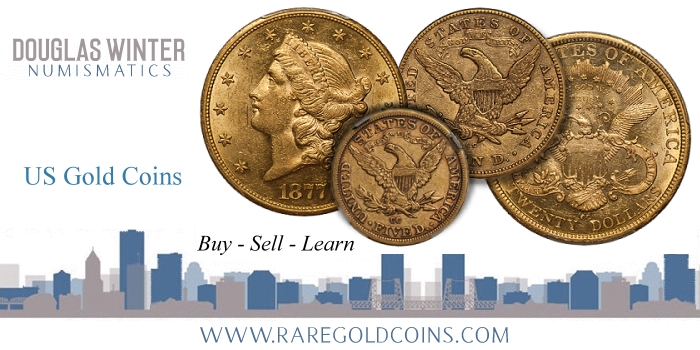By Doug Winter – RareGoldCoins.com ……
CoinWeek Content Partner
When I first started out in the coin business, I assumed I was going to sell everything; Morgan Dollars, Barber Dimes, Saint-Gaudens double eagles and Charlotte gold, I’d handle it all. But I quickly learned that it would be difficult–and costly–to be an expert in so many areas of the market. I then decided that I’d become really good at just a few things and leave the rest to other people.
 Nearly three decades later, that’s exactly what I’ve done: I’ve become a world-class expert in 18th and 19th century U.S. gold. I think my decision to become highly specialized was one of the best things that I’ve ever done from a career standpoint. And I believe that what I did has practical applications to new and advanced coin collectors alike.
Nearly three decades later, that’s exactly what I’ve done: I’ve become a world-class expert in 18th and 19th century U.S. gold. I think my decision to become highly specialized was one of the best things that I’ve ever done from a career standpoint. And I believe that what I did has practical applications to new and advanced coin collectors alike.
Becoming a savvy numismatist isn’t necessarily a difficult process. But it is an involved one and one that takes a lot of time. If you are like most people, time is one commodity that you do not have an excess of. Given the high value of time in this day and age, I’d suggest that you use the time you spend on numismatics wisely. This is where coin collecting specialization makes a lot of sense.
I became a specialist in the area of U.S. gold coinage because, as I mentioned above, I realized that the most economically viable approach to numismatics as a career for me was going to be as a specialist. I’d like to share a few thoughts of mine regarding specialization. Its a lot easier to become a competent numismatist who makes good decisions if you are focusing on a narrow range as opposed to a broad range. But I think the concept of specialization is not totally understood. You can be a “broad specialist,” a “narrow specialist” or an ultra specialist.”
Which one you choose depends on a number of factors including–but not limited to–your budget, your range of interest, availability of coins and opportunity factors. A “broad specialist” is a collector who has a pre-determined focus but not necessarily a constrained one. Let’s say, as an example, that you really like crusty original gold coins made prior to the Civil War and have a budget of up to $5,000 per coin. This means that you might purchase coins as diverse as an 1858-S gold dollar in AU58 or an 1846-D half eagle in VF35. Your focus isn’t so much a specific series or type as it is a “look.” In other words, your collection is focused on attractive, dirty coins. You might not know the relative rarity of an 1858-S gold dollar in AU58 but you know the “look.”
A “narrow specialist” is more focused on coins from a specific mint or of a specific denomination. He might buy an 1858-S gold dollar because he is putting together a set of gold dollars or, even more specifically, a subset of San Francisco gold dollars.
I like this sort of specialization because it gives a collector a much more narrow focus or what I would call a “micro focus” as opposed to a “macro focus.” If you are assembling a gold dollar set you have around 80 to 90 coins that you ultimately need to purchase and learn about. This is a lot easier than being an indiscriminate buyer of U.S. gold coins with a pool of hundreds–or even thousands–of issues to become familiar with.
A more narrow focus involving gold dollars would be the San Francisco set I mentioned above. There are only six coins to learn about and it wouldn’t take much to be accomplished in this area. But I think most collectors aspire to more than being “Mr. San Francisco gold dollar.”
Another way to specialize is to collect by die variety. This is a great collecting strategy for certain coins like bust half dollars or large cents but it doesn’t apply all that well to U.S. gold.
In my opinion, the ideal way to collect coins is to have a #1 set and then a secondary set to keep you busy when you can’t find coins for set #1. As an example, you could specialize in collecting early half eagles by date and have a secondary collection that is focused on Dahlonega half eagles in perfect, original EF grades.
Becoming a good numismatist is all about knowledge and by not biting off more than you can realistically chew. you stand a chance to be on equal footing with other collectors in your area of specialization. You might not aspire to write the standard reference book on San Francisco gold dollars but wouldn’t it be nice to be able to make purchases in this area of the market knowing that you were clued-in about the rarity, price history, appearance and minting history of each issue?
* * *





